Visit to get our entire library of TED Talks, transcripts, translations, personalized talk recommendations and more.
Indigenous languages across North America are under threat of extinction due to the colonial legacy of cultural erasure, says linguist Lindsay Morcom. Highlighting grassroots strategies developed by the Anishinaabe people of Canada to revive their language and community, Morcom makes a passionate case for enacting policies that could protect Indigenous heritage for generations to come.
The TED Talks channel features the best talks and performances from the TED Conference, where the world’s leading thinkers and doers give the talk of their lives in 18 minutes (or less). Look for talks on Technology, Entertainment and Design — plus science, business, global issues, the arts and more. You’re welcome to link to or embed these videos, forward them to others and share these ideas with people you know.
Become a TED Member:
Follow TED on Twitter:
Like TED on Facebook:
Subscribe to our channel:
TED’s videos may be used for non-commercial purposes under a Creative Commons License, Attribution–Non Commercial–No Derivatives (or the CC BY – NC – ND 4.0 International) and in accordance with our TED Talks Usage Policy (). For more information on using TED for commercial purposes (e.g. employee learning, in a film or online course), please submit a Media Request at
Dene Elder Paul Disain said,
“Our language and culture
is the window through which
we see the world.”
And on Turtle Island,
what is now known as North America,
there’re so many unique
and wonderful ways to see the world.
As a person of Indigenous heritage,
I’m interested in learning
Anishinaabemowin,
which is my heritage language,
because it lets me see the world
through that window.
It lets me connect with my family,
my ancestors, my community, my culture.
And lets me think
about how I can pass that on
to future generations.
As a linguist,
I’m interested in how language
functions generally.
I can look at phonetics and phonology —
speech sounds.
I can look at morphology,
or the structure of words.
I can look at syntax,
which is the structure
of sentences and phrases,
to learn about how humans
store language in our brains
and how we use it to communicate
with one another.
For example,
Anishinaabemowin,
like most Indigenous languages,
is what’s called polysynthetic,
which means that there are
very, very long words,
composed of little tiny pieces
called morphemes.
So I can say, in Anishinaabemowin,
“niwiisin,” “I eat,”
which is one word.
I can say “nimino-wiisin,” “I eat well,”
which is still one word.
I can say “nimino-naawakwe-wiisin,”
“I eat a good lunch,”
which is how many words in English?
Five words in English,
a single word in Anishinaabemowin.
Now, I’ve got a bit of a quiz for you.
In a one-word answer,
what color is that slide?
Audience: Green.
Lindsay Morcom: What color is that slide?
Audience: Green.
LM: What color is that slide?
Audience: Blue.
LM: And what color is that slide?
(Audience murmurs)
Not trick questions, I promise.
For you as English speakers,
you saw two green slides
and two blue slides.
But the way that we categorize colors
varies across languages,
so if you had been Russian speakers,
you would have seen two slides
that were different shades of green,
one that was “goluboy,”
which is light blue,
one that is “siniy,” dark blue.
And those are seen as different colors.
If you were speakers of Anishinaabemowin,
you would have seen slides
that were Ozhaawashkwaa
or Ozhaawashkozi,
which means either green or blue.
It’s not that speakers
don’t see the colors,
it’s that the way they categorize them
and the way that they understand shades
is different.
At the same time,
there are universals in the ways
that humans categorize color,
and that tells us about how human brains
understand and express
what they’re seeing.
Anishinaabemowin
does another wonderful thing,
which is animate, inanimate
marking on all words.
So it’s not unlike how French and Spanish
mark all words as either
masculine or feminine.
Anishinaabemowin
and other Algonquian languages
mark all words
as either animate or inanimate.
The things that you would think
to be animate are animate,
things that have a pulse:
people, animals, growing plants.
But there are other things
that are animate
that you might not guess, like rocks.
Rocks are marked as animate,
and that tells us really interesting
things about grammar,
and it also tells us
really interesting things
about how Anishinaabemowin speakers
relate to and understand
the world around them.
Now, the sad part of that
is that Indigenous languages
are in danger.
Indigenous languages that posses
so much knowledge of culture,
of history,
of ways to relate to one another,
of ways to relate to our environment.
Having been on this land
since time immemorial,
these languages have developed here
and they contain priceless
environmental knowledge
that helps us relate well
to the land on which we live.
But they are, in fact, in danger.
The vast majority of Indigenous
languages in North America
are considered endangered,
and those that are not
endangered are vulnerable.
That is by design.
In our laws, in our policies,
in our houses of governance,
there have been stated attempts
to eliminate Indigenous languages
and cultures in this country.
Duncan Campbell Scott
was one of the architects
of the residential school system.
On tabling a bill that required
mandatory residential school attendance
for Indigenous children in 1920, he said,
“I want to get rid of the Indian problem.
Our objective is to continue
until there is not
a single Indian in Canada
that has not been absorbed
into the body politic
and there is no Indian question,
and no Indian Department;
that is the whole object of this Bill.”
The atrocities that occurred
in residential schools were documented.
In 1907,
P.H. Bryce, who was a doctor
and an expert in tuberculosis,
published a report
that found that in some schools,
25 percent of children had died
from tuberculosis epidemics
created by the conditions in the schools.
In other schools, up to 75 percent
of children had died.
He was defunded by federal government
for his findings,
forced into retirement in 1921,
and in 1922, published
his findings widely.
And through that time,
Indigenous children
were taken from their homes,
taken from their communities
and forced into church-run
residential schools
where they suffered, in many cases,
serious emotional, physical
and sexual abuse,
and in all cases, cultural abuse,
as these schools were designed
to eliminate Indigenous
language and culture.
The last residential school
closed in 1996.
Until that time, 150,000 children or more
attended residential schools
at 139 institutions across the country.
In 2007,
the Indian Residential School
Settlement Agreement came into effect.
It’s the largest class action lawsuit
in Canadian history.
It set aside 60 million dollars
for the establishment of the Truth
and Reconciliation Commission of Canada.
The TRC gifted us with the ability
to hear survivor stories,
to hear impacts
on communities and families
and to gain access to research
that explored the full effect
of residential schools
on Indigenous communities
and on Canada as a whole.
The TRC found that residential schools
constituted what’s called
cultural genocide.
They state that, “Physical genocide
is the mass killing of the members
of a targeted group,
biological genocide is the destruction
of that group’s reproductive capacity.
And cultural genocide is the destruction
of those structures and practices
that allow the group
to continue as a group.”
The stated goals of Duncan Campbell Scott.
So they find that it’s cultural genocide,
although as children’s author
and a great speaker
David Bouchard points out,
when you build a building,
and you build a cemetery
next to that building,
because you know the people
going into that building are going to die,
what do you call that?
The TRC also gifted us
with 94 calls to action,
beacons that can lead the way forward
as we work to reconciliation.
Several of those pertain directly
to language and culture.
The TRC calls us to ensure
adequate, funded education,
including language and culture.
To acknowledge Indigenous rights,
including language rights.
To create an Aboriginal Languages Act
aimed at acknowledging and preserving
Indigenous languages,
with attached funding.
To create a position
for an Aboriginal Languages Commissioner
and to develop postsecondary
language programs
as well as to reclaim place names
that have been changed
through the course of colonization.
At the same time as the Indian
Residential School Settlement Agreement
came into effect,
the United Nations adopted
the United Nations Declaration
on the Rights of Indigenous People
in 2007.
It states that Indigenous people
have the right to establish and control
their own education
systems and institutions
providing education
in their own languages,
in a manner appropriate
to their cultural methods
of teaching and learning.
In 2007,
when that was brought into effect,
four countries voted against it.
They were the United States,
New Zealand, Australia
and Canada.
Canada adopted the United Nations
Declaration on the Rights
of Indigenous People in 2010.
And in 2015, the government
promised to bring it into effect.
So how are we collectively
going to respond?
Here’s the situation that we’re in.
Of the 60 currently spoken
Indigenous languages in Canada,
all but six are considered endangered
by the United Nations.
So, the six that aren’t are Cree,
Anishinaabemowin,
Stoney, Mi’kmaq,
Dene and Inuktitut.
And that sounds really dire.
But if you go on to the Atlas
of the World’s Languages in Danger
through the UNESCO website,
you’ll see a little “r”
right next to that language right there.
That language is Mi’kmaq.
Mi’kmaq has undergone
significant revitalization
because of the adoption
of a self-government agreement
that led to culture
and language-based education,
and now there are Mi’kmaq children
who have Mi’kmaq as their first language.
There’s so much that we can do.
These children are students
in the Mnidoo Mnising
Anishinabek Kinoomaage,
an immersion school on Manitoulin island,
where they learn in Anishinaabemowin.
They arrived at school
in junior kindergarten
speaking very little,
if any, Anishinaabemowin.
And now, in grade three and grade four,
they’re testing at intermediate
and fluent levels.
At the same time,
they have beautifully high self-esteem.
They are proud to be Anishinaabe people,
and they have strong learning skills.
Not all education
has to be formal education either.
In our local community,
we have the Kingston
Indigenous Language Nest.
KILN is an organization now,
but it started six years ago
with passionate community members
gathered around an elder’s kitchen table.
Since then, we have created
weekend learning experiences
aimed at multigenerational learning,
where we focus on passing
language and culture on to children.
We use traditional games,
songs, foods and activities to do that.
We have classes
at both the beginner
and intermediate levels
offered right here.
We’ve partnered with
school boards and libraries
to have resources and language
in place in formal education.
The possibilities are just endless,
and I’m so grateful
for the work that has been done
to allow me to pass language
and culture on to my son
and to other children
within our community.
We’ve developed a strong,
beautiful, vibrant community as well,
as a result of this shared effort.
So what do we need moving forward?
First of all, we need policy.
We need enacted policy
with attached funding
that will ensure that Indigenous language
is incorporated meaningfully
into education,
both on and off reserve.
On reserve, education is funded
at significantly lower levels
than it is off reserve.
And off reserve,
Indigenous language education
is often neglected,
because people assume
that Indigenous people
are not present in provincial schools,
when actually, around 70 percent
of Indigenous people in Canada today
live off reserve.
Those children have equal right
to access their language and culture.
Beyond policy, we need support.
And that doesn’t just mean
financial support.
We need space where we can
carry out activities,
classes and interaction
with nonindigenous populations as well.
We need support
that looks like people
wanting to learn the language.
We need support where people talk
about why these languages are important.
And to achieve that, we need education.
We need access to immersion
education primarily,
as that is most certainly
the most effective way
to ensure the transmission
of Indigenous languages.
But we also need education
in provincial schools,
we need education
for the nonindigenous populations
so that we can come to a better
mutual understanding
and move forward in a better way together.
I have this quote hanging
in a framed picture on my office wall.
It was a gift from a settler ally student
that I taught a few years ago,
and it reminds me every day
that we can achieve great things
if we work together.
But if we’re going to talk
about reconciliation,
we need to acknowledge
that a reconciliation that does not result
in the survivance and continuation
of Indigenous languages and cultures
is no reconciliation at all.
It is assimilation,
and it shouldn’t be
acceptable to any of us.
But what we can do
is look to the calls to action,
we can look to the United
Nations Declaration
on the Rights of Indigenous People
and we can come to a mutual understanding
that what we have,
in terms of linguistic
and cultural heritage
for Indigenous people in this country,
is worth saving.
Based on that, we can step forward,
together,
to ensure that Indigenous
languages are passed on
beyond 2050, beyond the next generation,
into the next seven generations.
Miigwech. Niawen’kó:wa. Thank you.
(Applause)

 Science & Technology4 years ago
Science & Technology4 years ago
 Wired5 years ago
Wired5 years ago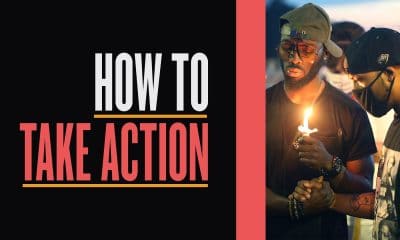
 CNET4 years ago
CNET4 years ago
 Wired5 years ago
Wired5 years ago
 Wired5 years ago
Wired5 years ago
 Wired5 years ago
Wired5 years ago
 People & Blogs2 years ago
People & Blogs2 years ago
 Wired5 years ago
Wired5 years ago



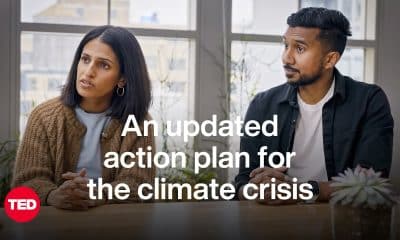

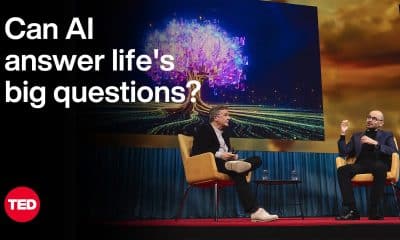

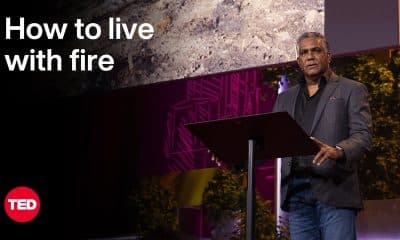



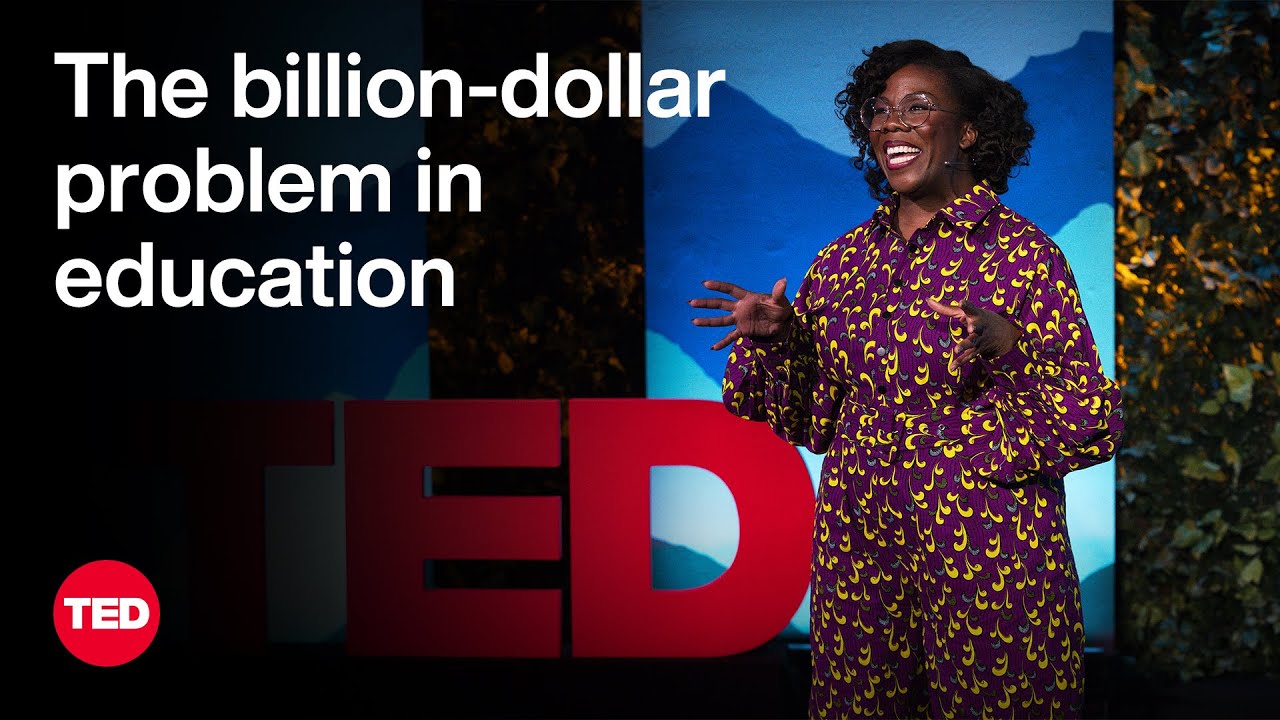

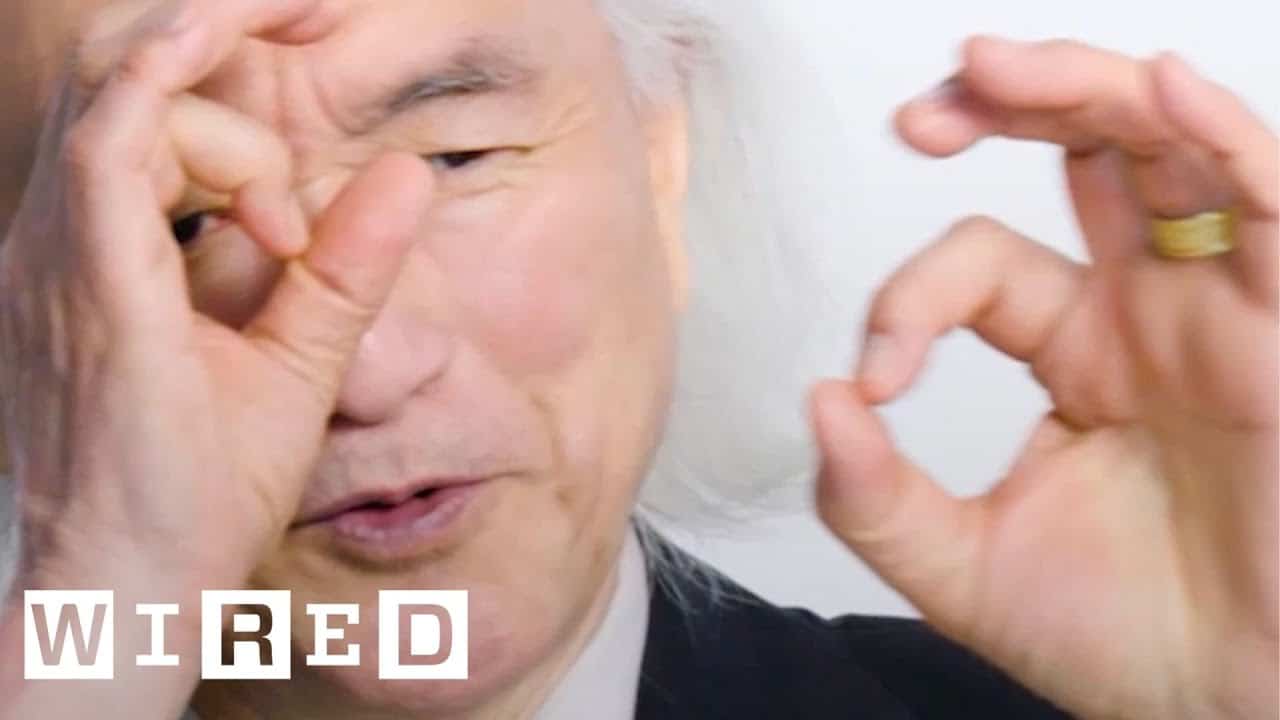




Nevin Avcı
June 25, 2021 at 8:25 pm
(English) Subtitle flows before speaker…Fortunately , I am able to little bit understand
aluran
June 25, 2021 at 8:26 pm
The thing about rocks being animate reminds me of that theory that it could be sentient we just assume it isnt
Emma
June 25, 2021 at 8:54 pm
Was super surprised to hear about Mi’kmaq being a well-reserved language. My dad’s side of the family recently found out the specific tribe we’re descended from is Mi’kmaq, and lately I’ve been reading up on it to learn about the culture, language, etc. My grandpa’s brother has been involving himself in the culture for a few years now to get back what was taken from my great-grandpa.
Christy Nicholas, Author
June 25, 2021 at 10:40 pm
My husband and his tribe (Wolostaqi’ik/Maliseet) are working hard to keep their language, stories, and legends alive. It’s been very difficult.
Henne MMC
June 26, 2021 at 10:45 am
@Δ.Μ? Whyyy
Christy Nicholas, Author
June 26, 2021 at 12:19 pm
Because a person’s culture is part of their identity, history, and family. Because language is part of that culture. To allow those unique details to die is a tragedy. Only people without foresight or depth don’t care if that uniqueness dies.
harshith vdn
June 26, 2021 at 3:27 pm
@Henne MMC that’s like thinking we are going to go extinct anyway so why bother with anything like global warming or stopping pandemics and avoiding disasters
Henne MMC
June 26, 2021 at 6:35 pm
@harshith vdn I think we can tackle global warming etc better when we all speak the same language
mr2mike
June 26, 2021 at 9:19 pm
Sad but language and culture always evolves and some are forgotten.
English IELTS
June 25, 2021 at 11:15 pm
❤️❤️❤️❤️
Yumnam Joyshree
June 26, 2021 at 1:23 am
❤
DrJackJeckyl
June 26, 2021 at 1:47 am
Nope.
stargel
June 26, 2021 at 2:50 am
my first language is portuguese, we learn about indigenous people in schools… i learned english during my life… but i have never been so confused in my whole life
mr2mike
June 26, 2021 at 8:17 pm
Just know indigenous goal is more government money and you’ll be less confused.
Sanction
June 26, 2021 at 5:33 am
Why are we revitalizing a language that is not used. Frankly we should be unifying to a main language
RyKloog
June 26, 2021 at 7:03 am
Its not like they dont speak a major language. The people who are speaking revitalised languages also speak English, or French, or Spanish, or whatever world language is in their area. These people are acquiring two native language, one indigenous and the other a world language. Its all about culture, identity, and belonging
Niranjan Hanasoge
June 26, 2021 at 8:30 am
As an employee in a multi-national company and a frequent worldwide traveler, I do welcome your suggestion of having a single, universal language. That’s purely from an ease-of-communication point-of-view. In fact, everybody agrees that a universal language would be helpful, though there’s no universal agreement on what that language should be! 🤣
However, that’s a completely different issue from revitalizing a language that represents one’s history, heritage, and culture.
I see no conflict in having it both ways. Most people already speak two or more languages in order to communicate with different groups. There’s no reason why they shouldn’t be allowed to learn and use another one, if it means that much to them. Remember that it’s not being forced on others. With a little bit of understanding and tolerance, any two people will always be able to find a _lingua franca_ to communicate with each other.
Niranjan Hanasoge
June 26, 2021 at 7:26 am
If you haven’t guessed yet: The color slides at 1:45 are a secret recruitment test co-sponsored by Pantone and Dulux. If you managed to come up with unique marketable names for each of the four colors, congratulations—expect a job offer soon!
tommyjabrahamsson
June 30, 2021 at 5:11 am
0å0++00
Paridae Vision
June 26, 2021 at 8:44 am
English has become the language of global fascism, babylonian language of the tyrants of today.
Koustabh Konwar
June 26, 2021 at 9:12 am
The captions are going earlier than the speech.
Andrey Koschey
June 26, 2021 at 11:17 am
Why would someone want to revitalize dying or dead languages? As a society we should further work on helping people to learn one universal language. And getting rid of the rudimentary languages. There is no use in having thousands of languages in this day and age. It further separates us while we need to work together as the citizens of the Earth.
Hans Hans
June 26, 2021 at 11:29 am
Because those resemble human culture. Native Americans already lost enough of their culture.
Robert La Porte
June 28, 2021 at 3:29 am
Love starts with humility.
Stephane Dorion
June 26, 2021 at 1:56 pm
2021. It’s over.
And it will never come back.
Get over it.
Gaasuba Meskhenet
June 26, 2021 at 2:29 pm
Save languages by ending homelessness so I can have time to study
Please look at my eviction and homeless vlogs
lohphat
June 26, 2021 at 4:16 pm
Well, English has separate words for colors we can group together as “blue”. e.g. periwinkle, teal, cyan. It’s all a fuzzy mess.
pinaky das
June 26, 2021 at 4:45 pm
Regional language r core information on whole biodiversity alignments so it’s must reserved for whole history of mankind ..
Hardeep singh
June 26, 2021 at 5:43 pm
Indian 🤣 for what ?
Ant B
June 26, 2021 at 10:05 pm
Hopefully the aboriginal Cooper color people of America can get their history and language back also… Instead of the hijacks
Seren Saul
June 27, 2021 at 1:48 am
This is an amazing message! Indigenous history and language has to be taught, for too long have these beautiful cultures and people been hurt and silenced. This has to change! Lindsay Morcom message is truly wonderful, thank you for this Ted Talk.
Caterfree10
June 27, 2021 at 6:17 am
Hey so, the subtitles are not timed to when the woman is speaking. That’s not professional whatsoever, y’all.
Daniel Reyes
June 27, 2021 at 3:16 pm
You could post this in your instagram so we can share it in our stories.
Targeted Victim
June 27, 2021 at 3:58 pm
Some psychopath is using the Dutch Mainstream Media, various YouTubers, Twitchers to torture me endlessly for 3 years now. He is paying people to gang stalk me. Everyone participating in this are psychopaths too and belong in jail. He has hacked all my devices and is torturing me to death. He is violating all human rights laws.
Douglas Wright
June 28, 2021 at 3:26 am
Too bad all the references are a century old. Breaking news: Nike and Apple “employ” slaves. Drrrpp.
Edward L𝖆w𝖗𝖊𝖓𝖈𝖊 𝑜𝑓🇬🇧
June 28, 2021 at 5:13 am
Thank you TED √
⫷Religious freedom⫸
🇮s l a m │ has a proud tradition of tolerance . √
We see it in the history of
A⃝ndalusia✶ and C⃝ordoba✶ │ during the Inquisition.
I saw it firsthand in Indonesia✶ ⃝ 🇮🇩🇮🇩
where devout Christians worshiped freely in an
overwhelmingly Muslim country.
That is the spirit we need today.
People in every country should be fre⃝e ★ ★ to choose and live their faith
based upon the persuasion of the mind and the heart and the soul.
Thistolerance │ is essential for religion to thrive, but it’s being challenged in
many different ways.
Among some M⃝uslims, there’s a disturbing tendency to measure one’s own faith by the rejection of somebody else’s faith.
The richness of
religious diversity must be upheld — whether it is for Maronites in
Lebano⃝n or the Copts
in Egyp⃝t🇪🇬🇾🇪 .
And if we are being honest,
fault lines must be closed among Muslims, as well, as the divisions
between Sunni and Shia │ have led to tragic violence✶,
particularly in Iraq⃝ 🇮🇶🇮🇶 .
🇫reedom of relig⃝ion│ is central to the ability of peoples to live together.
We must always examine the ways in which we protect it.
For instance,
in the United States ⃝ 🇺🇸🇺🇸 │ rules on charitable giving have made it harder for
Muslims to fulfill their r⃝eligious obligation.
Inner Smile
June 29, 2021 at 6:41 am
Always try to improve your brain skill
Yousuf Azad
June 29, 2021 at 11:21 am
Feedback : Please compare Indigenous cultural diversity to European cultural diversity and how would it be if it was destroyed. I think it helps giving a perspective.
linuxisbetter0
June 29, 2021 at 10:07 pm
TED used to be a great place for information and knowledge…now it’s become a medium for activism. I’m so tired of politicization of EVERYTHING
me man
June 30, 2021 at 5:19 pm
Quote on wall… Jesus had only 12 disciples, small group that changed the world.